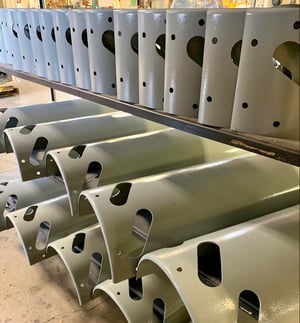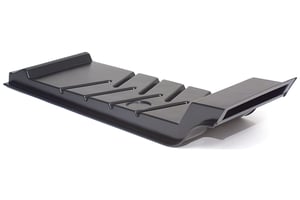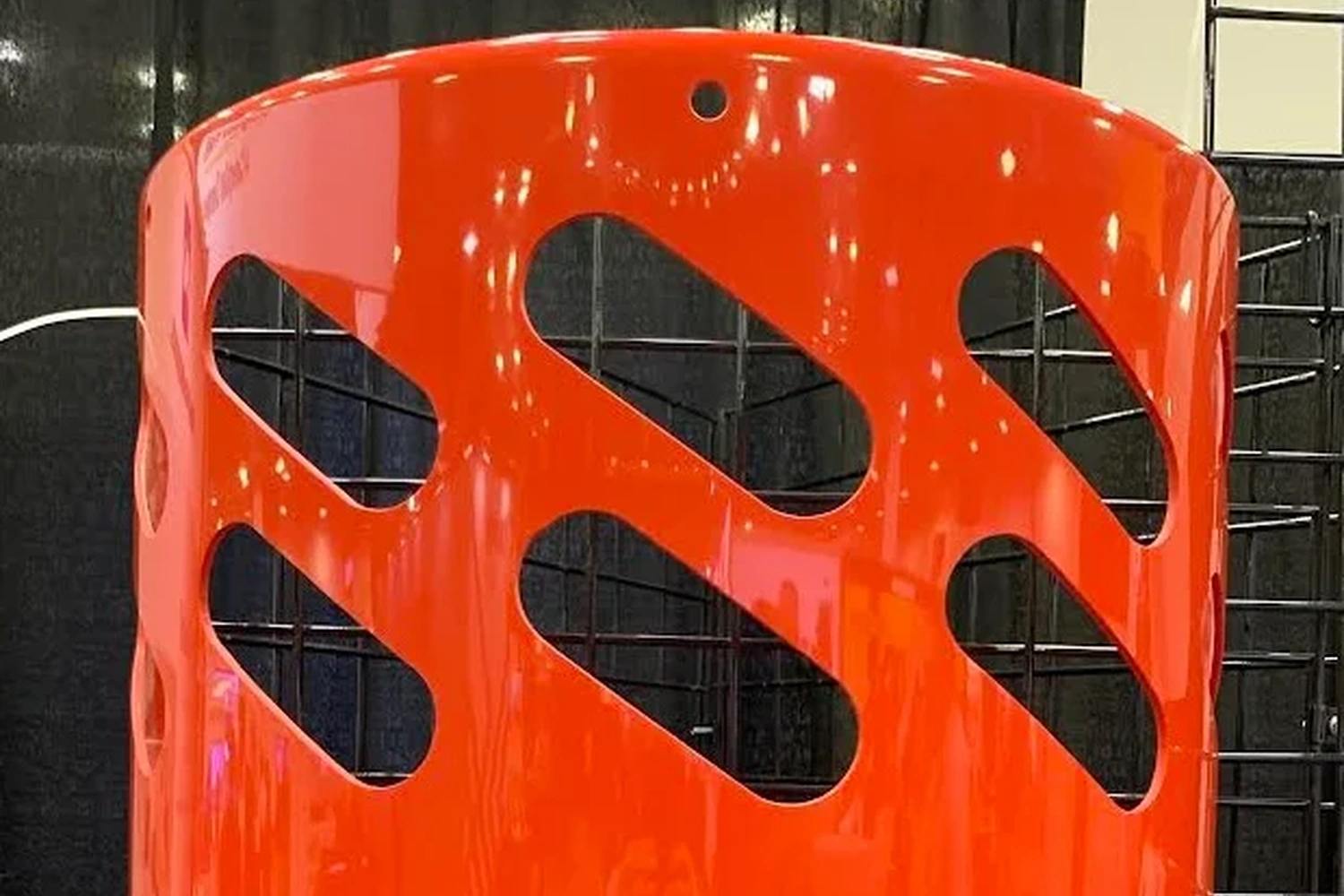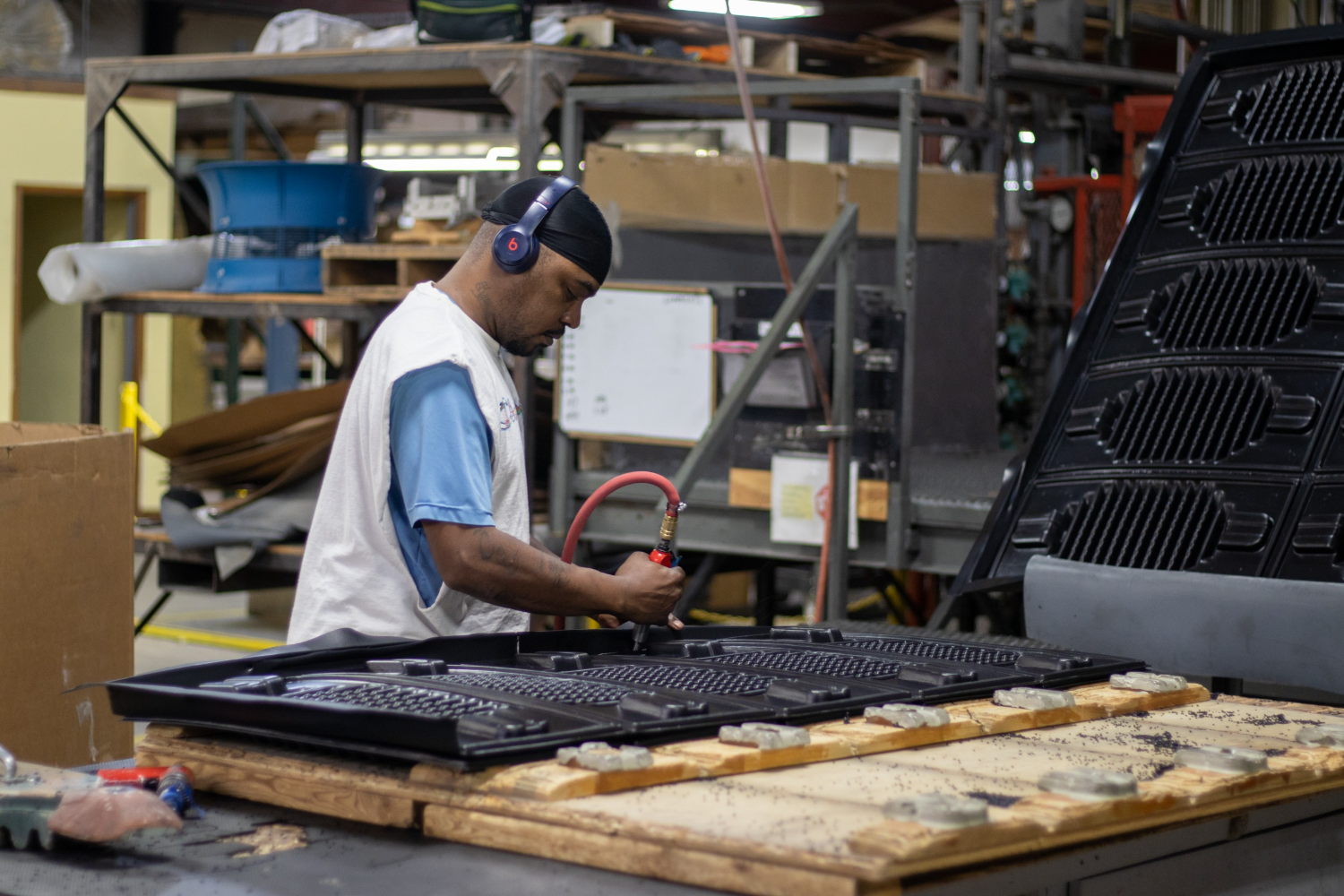Thermoforming refers to the process by which extruded plastic sheets are heated to the point of pliability and pressed into a mold to form a specific shape for use in another application. While sheet metal fabrication has a similar end goal, the processes differ in material, method of manipulation, cost, environmental impact, and more.
Benefits of Switching to Thermoforming
 Thermoforming and sheet metal fabrication are used in similar applications. Though sheet metal offers greater heat resistance and strength, thermoformed plastics carry a host of other benefits, including:
Thermoforming and sheet metal fabrication are used in similar applications. Though sheet metal offers greater heat resistance and strength, thermoformed plastics carry a host of other benefits, including:
- Elimination of Corrosion. Whereas sheet metal fabrication utilizes steel, aluminum, or other metals that can corrode, thermoformed parts are constructed of resistant plastics that can withstand elemental exposure.
- Easier Recycling. Although some plastic manufacturing methods are known for creating excessive waste, scraps generated during the thermoforming process can be recycled into usable material.
- Removed Risk of Scratches or Denting. While metal parts are strong, their exterior finishes often determine their resistance to corrosive elements, scratches, dents, etc. Thermoformed components are less sensitive to the effect of these sorts of damages.
- No Secondary Painting Services Required. Because plastics can be created or sourced in nearly any color, there is no need for paint or other related finishes unless additional traits are desired.
- Better Impact Absorption. Polymers can be modified or blended in various ways to alter rigidity and improve the impact resistance and durability of thermoformed plastics.
- Noise Reduction. Plastics can absorb or dampen sounds created through material reverberation, yielding them less audibly abrasive than identical components crafted from metal.
- Improved Aesthetics. Thermoformed parts can be produced in almost any shape, size, color, or finish, allowing for the creation of more aesthetically appealing products.
- More Complex Shapes. Unlike sheet metal fabrication which has distinct limitations in creating curves, angles, and other intricate features, thermoforming provides greater design freedom since plastics can be molded into even the most complex of shapes.
- Lighter Weight. Significantly lighter than their sheet metal counterparts, thermoformed plastics save money in all weight-dependent categories: production, shipping, installation, maintenance, etc.
- Cost Savings. In addition to the direct impacts of weight, thermoforming often saves money by shortening the total production cycle by removing steps like painting and other secondary operations. Sheet metals are also subject to market prices, whereas plastic prices typically are more stable.
- Shorter Lead Times. With a shorter and more efficient production cycle, thermoforming projects require less lead time than sheet metal fabrication.
Best Applications for Thermoforming
 With the array of benefits above, it is no surprise that thermoforming plays a significant role in a variety of industries, including for applications such as:
With the array of benefits above, it is no surprise that thermoforming plays a significant role in a variety of industries, including for applications such as:
- OEM. OEMs from a wide range of industries rely on high-quality thermoformed plastic components.
- Medical Equipment. Thermoforming is used to create housings and enclosures, sterile packaging, trays and bins, hospital room panels, and more.
- Building & Construction. This method is suitable for making machinery covers, equipment enclosures, skylights, and tool cases.
- Lawn & Garden. Lawn and garden applications for thermoformed plastic include wheelbarrows, mower parts, hand tools, garden carts, and more.
- Agricultural Equipment. Agricultural equipment such as sprayer shells, animal housing stalls, feed/water containers, and tractor components can be created with thermoforming.
- Automotive Components. Thermoforming is ideal for making interior and exterior vehicle paneling, seating parts, bumpers, and more.
- Aerospace & Aviation. Aerospace and aviation applications for thermoforming include galley components, seating parts, and ducting.
- Business Machines & Equipment. Office furniture, cubicle panels, and printer enclosures are all applications for thermoforming.
- Mass Transit. Mass transit components such as wall panels, ceiling panels, seating, gap covers, dashboard components, and light housings can be made with thermoforming.
- Food Service. This method is used to create liquid dispensing enclosures, vending machine paneling, and other food dispensing equipment.
Thermoforming Solutions at Plastic Components, Inc.
Thermoforming is an efficient, cost-effective alternative to sheet metal fabrication. The environmentally friendly process offers greater design freedom and shorter production cycles while still creating a durable, resistant part.
For almost 50 years, Plastic Components, Inc. has been a leader in providing large thermoformed components for industries like automotive, mass transit, appliance manufacturing, and more. Our knowledgeable team will guide you through the entire thermoforming process from prototype to production with in-house capabilities including design and engineering, manufacturing, and tooling.
For more information about thermoforming with PCI, contact us today.



